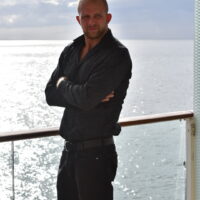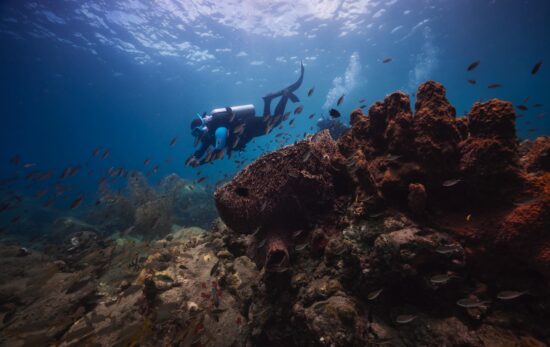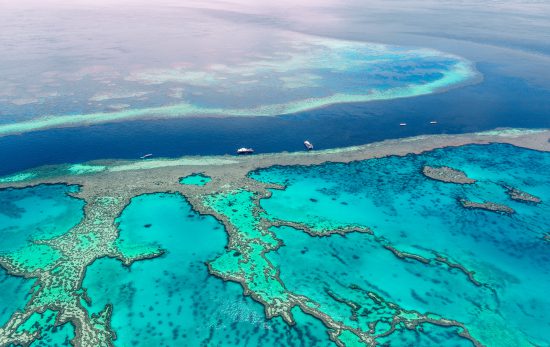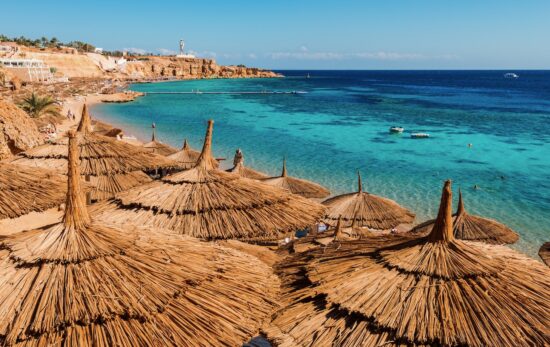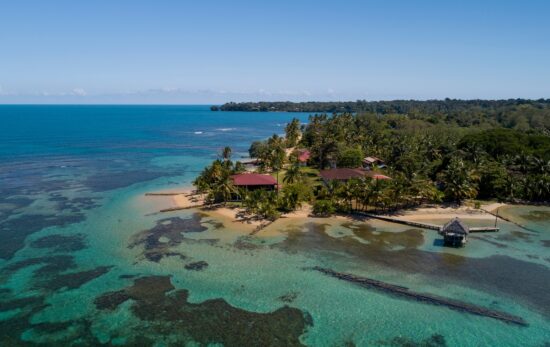Bonaire is one of the best scuba diving destinations in the world. Unlimited shore diving, macro life, beginner-friendly dives and services that cater to advanced divers make this Caribbean charmer a true haven for total diver freedom. The way the island has cultivated and created this shore diving infrastructure is like no other, keep reading to learn how diving in Bonaire works.
Although known for diving, the island offers so much more to its guests and residents. Whether you want to feed 700 donkeys, explore the flamingo-filled lakes, or fill your entire dive-cation with underwater views, Bonaire is a destination for everyone.
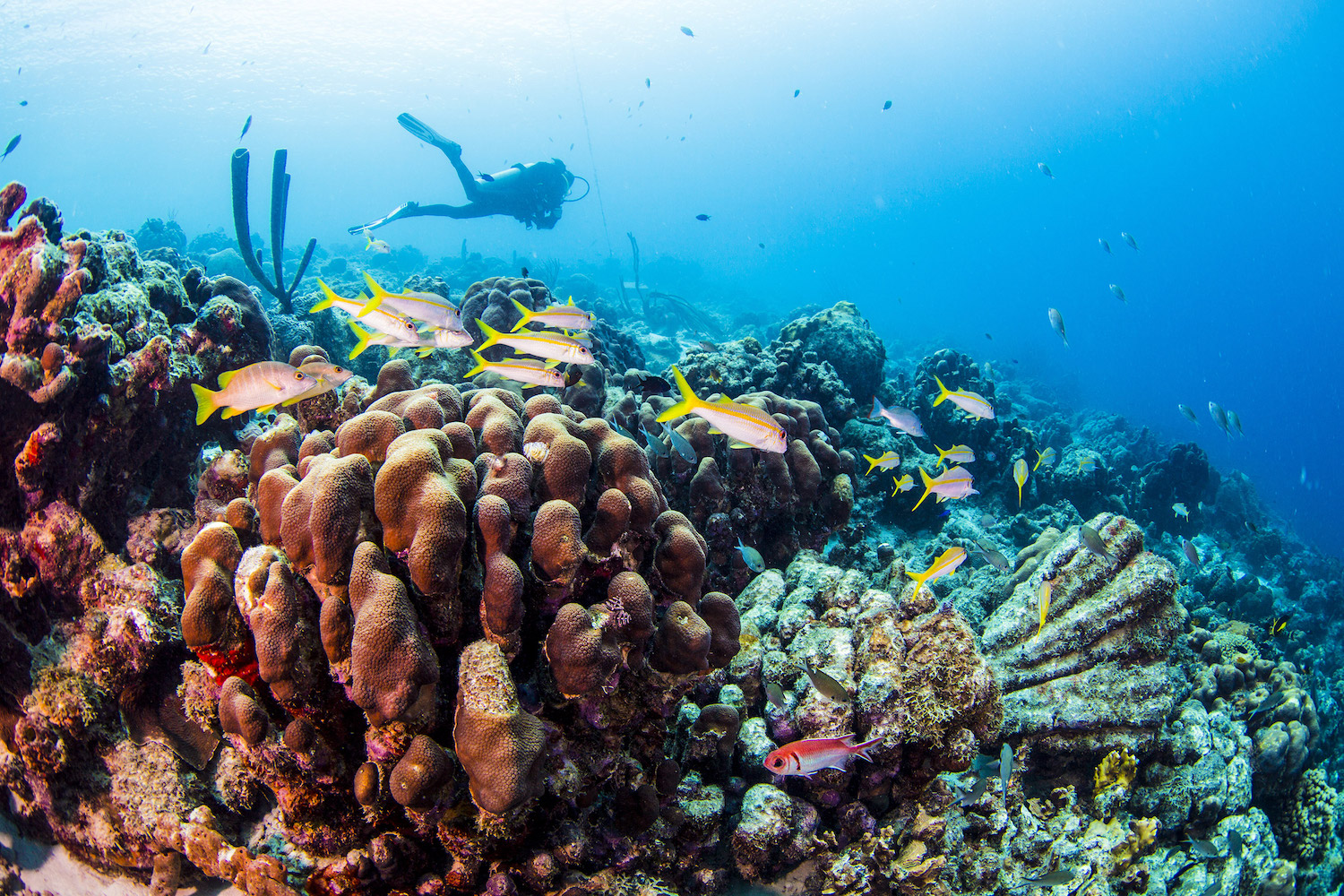
What to Know about Bonaire
Language: Officially Dutch, but everyone also speaks English.
Currency: U.S. dollar.
Signature Dish: Keshi yena, a hunk of Edam cheese scooped out and filled with spiced meat, olives, veggies and raisins.
Signature Topside Activity: Having lunch and watching the windsurfers at Lac Bay (and maybe even taking a lesson).
Main Airport: BON, Flamingo International Airport near Kralendijk.
Water Temp: 78 to 82°F/ 25 to 27°C
Viz: 60 feet/18 meters or greater.
Travel Tip: Most flights leave and depart on Saturday, so plan accordingly.
There’s no such thing as oversleeping and missing the dive. With scores of shore diving sites, open 24 hours a day, Bonaire offers everyone their fill of adventure. The action is nonstop, if you want it to be, and it happens on your schedule. So, go ahead and stay up late and sleep in. Or get up early for a sunrise dive. Plus, if you choose to dive some of the healthiest reefs in the Caribbean from the comfort of the boat, know that the satellite isle of Klein Bonaire adds even more dives to the menu. The options are endless. So stop worrying about FOMO and get out there and dive — however you want.
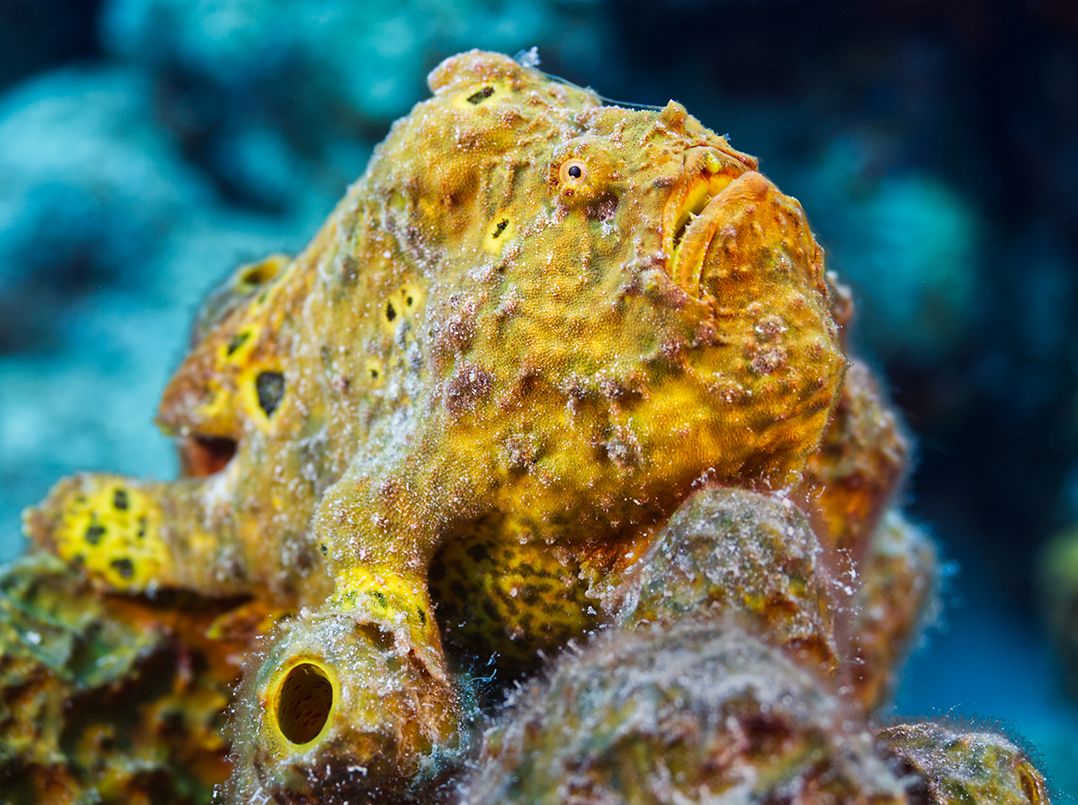
Marine Life in Bonaire
Before getting on a plane and exploring any new dive destination, you’ll want to know what to expect! Like most places in the Caribbean, you can find many species of marine life around the local reefs in Bonaire. If you’re interested in knowing what each of these fish are, take the PADI Fish ID course!
In the Caribbean, few are better masters of camouflage than the frogfish, and Bonaire’s healthy reefs offer an ideal hideout. If you haven’t already learned the art of finding frogfish, start by scouring yellow and orange sponges near a sandy bottom. Also note that this sneaky fish loves to be under pilings, docks, chains, and other nautical structures.
If all else fails, ask a local. Because frogfish don’t move much, Bonaire dive guides are aces at giving you sponge-by-sponge directions on where to swim and turn to find their exact location, give or take a few feet.
Alternatively, if you’re looking for the bigger species, here are some of the things you might be able to spot in Bonaire:
- Whale Sharks
- Tarpon
- Turtles
- Barracuda
- Goliath Groupers
- Eagle Rays
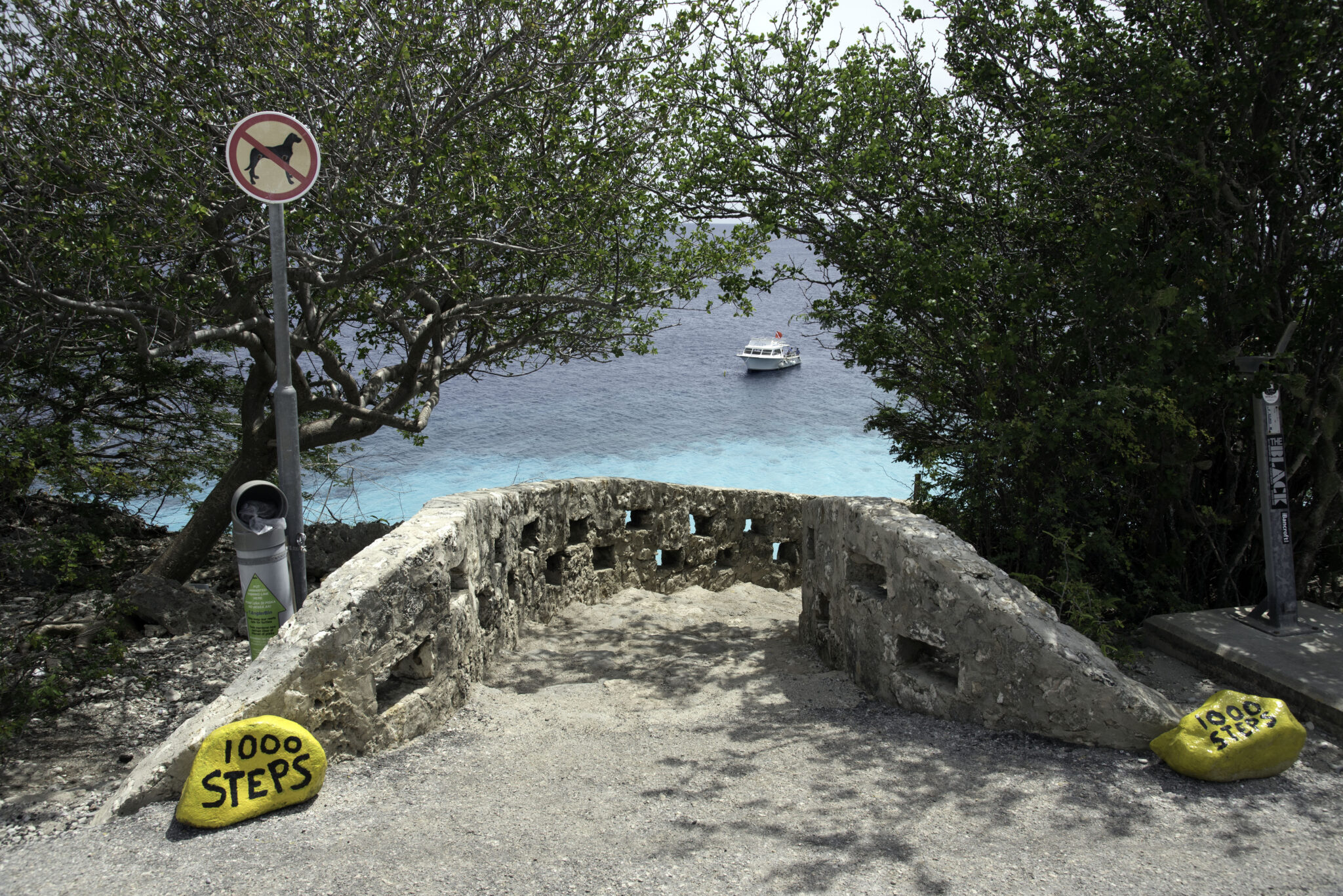
What to Know About Shore Diving in Bonaire
Total Access – Bonaire is a favored shore diving destination in the Caribbean/Atlantic region. Not just for the diversity of sites, but also for how easy it is to shore-dive this island. Free maps at the airport guide you to every named site on the island. Plus, with just one major road encircling the 111-square-mile island, it’s practically impossible to get lost.
Freedom of Choice – Bonaire makes it easy to pack three, four, five or even six dives into each day. Explore the sites you’ve heard the most about, or drive until something piques your interest. Let your senses guide you.
Tina Wall, a longtime instructor at Buddy Dive Resort, finds that the independent spirit of Bonaire surprises divers. “They come away saying, ‘Wow, I just did whatever I wanted all week long!’ — and isn’t that what vacation is all about?”
Get in Your Car and Dive – Bonaire is also home to a drive-through tank-filling station, found at Buddy Dive Resort. Swing by and trade out empty tanks for full ones. The convenience of having a vehicle makes it easy to get in a predawn or late-night dive. Simply find the painted yellow rocks marking Bonaire’s dozens of shore sites, park the truck, suit up, and wade in.
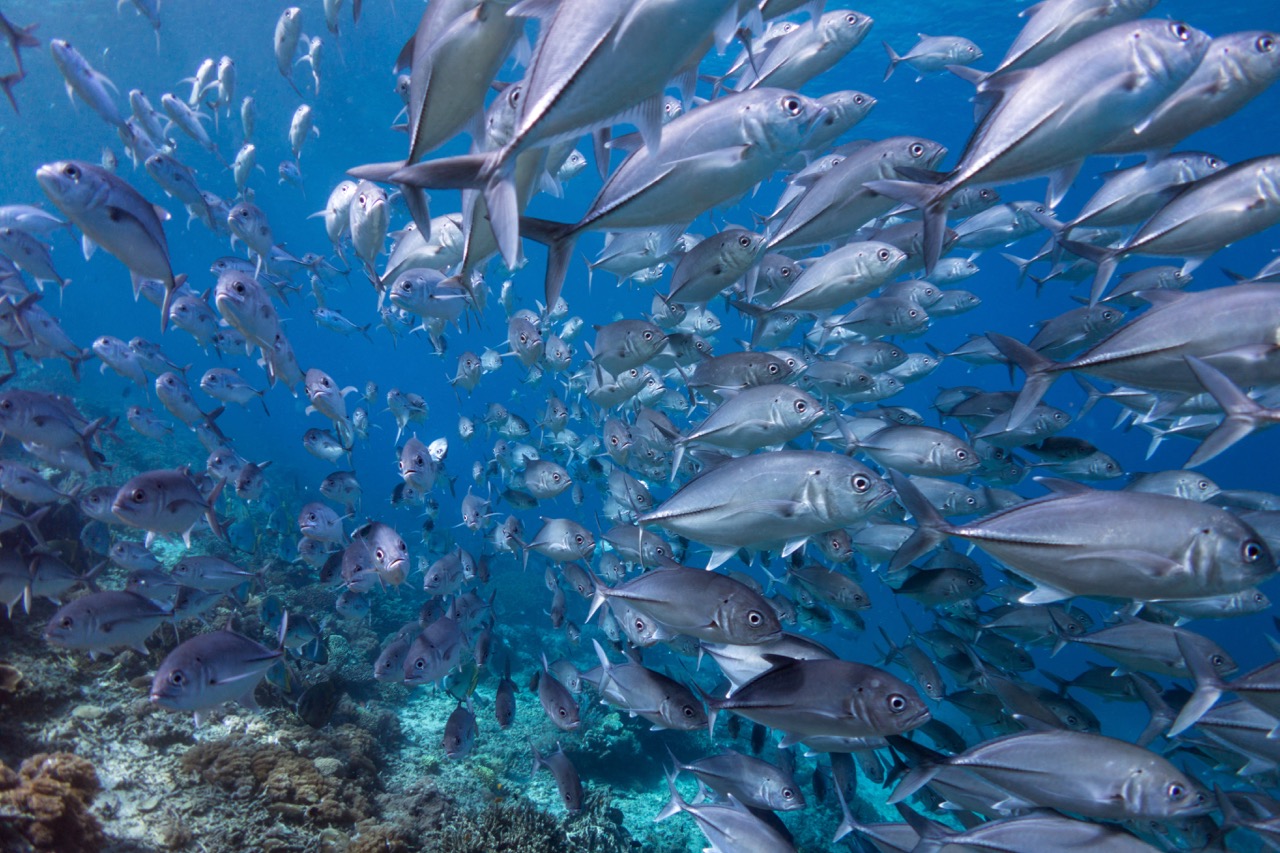
Must-See Dive Sites in Bonaire
No matter where we go in the world, everyone has their own personal favorite dive site, and you’ll find every diver who has visited Bonaire has a different answer when questioned about top sites. However, there are a few dive sites in Bonaire mentioned more than others. Listed below, in no particular order, are some of the must-see dive sites around the island:
Recreational Dive Sites
Bonaire is widely compatible with divers of all levels. If you enjoy recreational dive (up to 40m – 130ft), these dive sites are for you.
| Dive Site Name | Depth in Meters | Depth in Feet |
| 1000 Steps | 6-30 Meters | 20-100 Feet |
| Alice in Wonderland | 10-30 Meters | 30-100 Feet |
| Hilma Hooker Wreck | 18-30 Meters | 60-100 Feet |
| Bari’s Reef | 10-30 Meters | 30-100 Feet |
Technical Dive Sites
Bonaire is not only a hot destination for beginners, it’s also popular among advanced divers. The reef that surrounds Bonaire dips to 150 feet and beyond, so it’s set up to accommodate divers who like to go deep. Yes, even technical-diving-limits deep. Resorts, including Buddy Dive, offer mixed gas and rebreather support. And everywhere you dive, you will benefit from the island’s 40-year commitment to marine-park protection.
If you’re certified and ready to take a deep dive around Bonaire, these dive sites are for you.
| Dive Site Name | Depth in Meters | Depth in Feet |
| Windjammer Wreck | 100 Meters | 300 Feet |
| Red Slave | 40-60 Meters | 130-180 Feet |
| La Dania’s Leap | 150 Meters | 450 Feet |
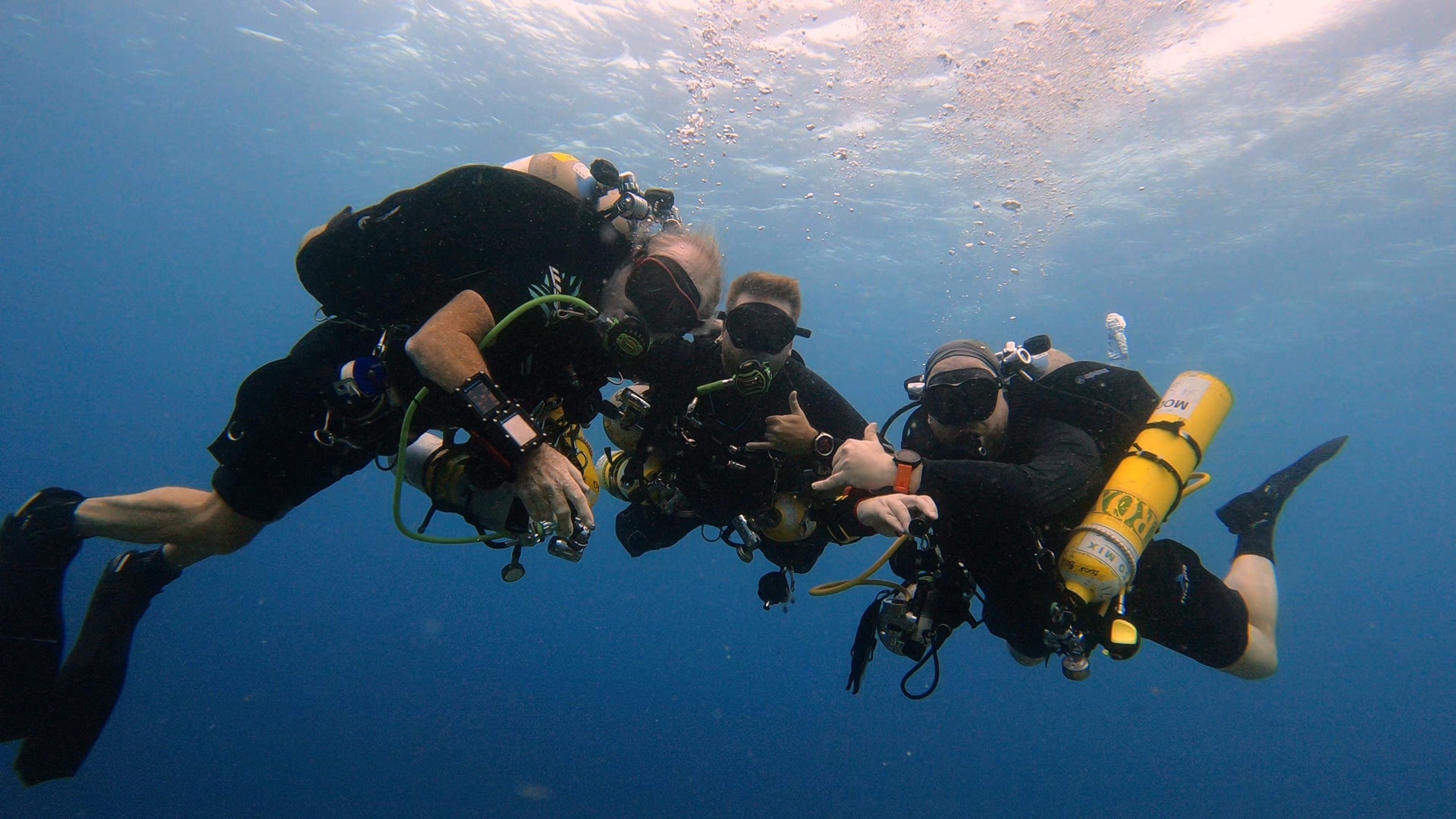
Non-Diving Island Activities
Bonaire truly is a dive-at-your-own-pace dive location due to its shore diving infrastructure. You can dive when you want and however many times you want. Although, if you want to spend a little bit of time on shore, you sure won’t be bored!
On Bonaire, you will find a Donkey Sanctuary that boasts 700 + donkeys! The sanctuary welcomes visitors, and the donkeys will give you a thank you upon arriving…’Hee-HAW’.
Next, there’s a magnificent shallow lake called Lake Gotomeer. Depending on when you arrive, you may be lucky enough to catch a congregation of bright pink flamingos spotting the waters like poca-dots. The best time to see this fantastic view is between January and July.
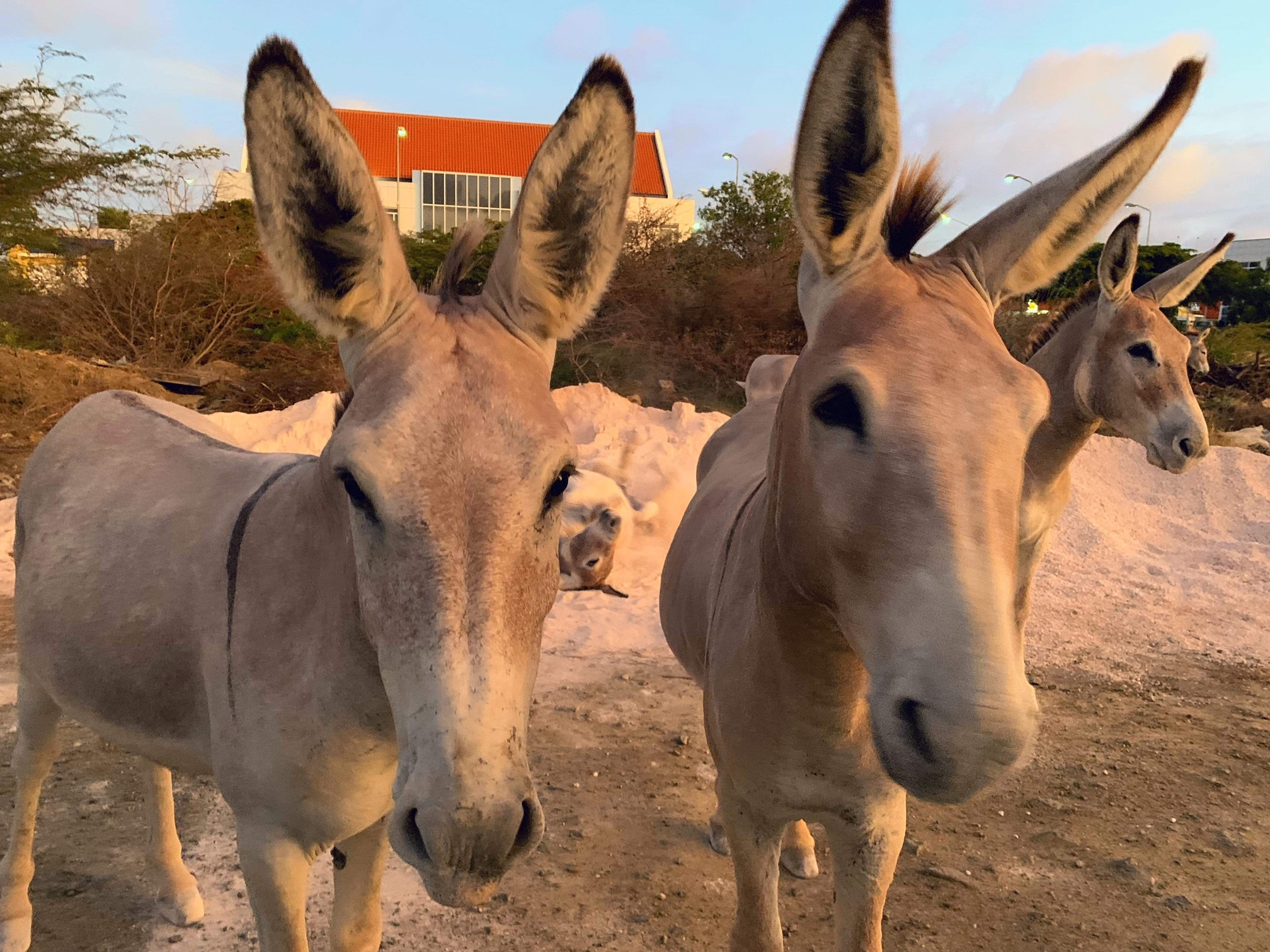
How to Dive in Bonaire
Because Bonaire is a self-sufficient diving destination, starting your first dive may be confusing or intimidating. Before you jump in the water, you’ll need to acquire a Marine Park Tag, which is USD $40 (at the time of writing) and permits you to dive for one calendar year.
You’ll also need to complete a mandatory orientation dive with a local dive shop before you venture out on your own. This orientation will help you to become more familiar with the yellow marked stones, which signify where dive sites are.
Once in the water, some sites have underwater navigational buoys to help keep you on track. Continue on your dive, and turn back at your planned turn-around schedule.
If shore diving independently isn’t for you, there is also the option to go on guided shore or boat dives.
Book a Dive Trip to Bonaire
Are you ready to jump on a plane for Bonaire? Use our PADI dive shop locator to find a dive shop on the island or check out PADI Travel to book your stay online!
